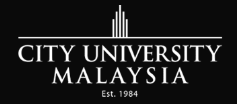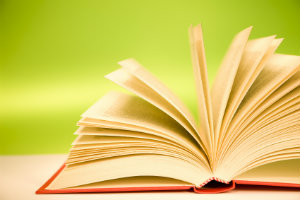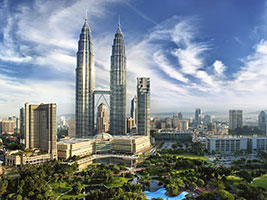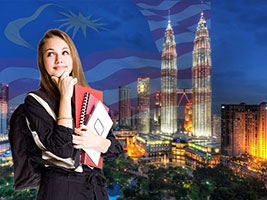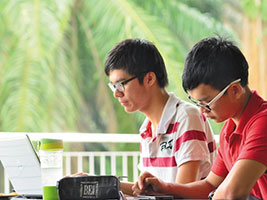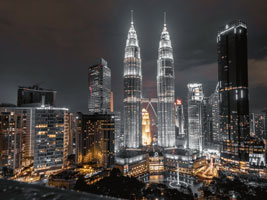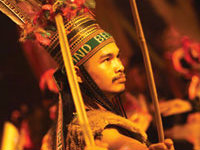About Malaysia
by StudyMalaysia.com on June 3, 2017 | Why Study in Malaysia, Top Stories
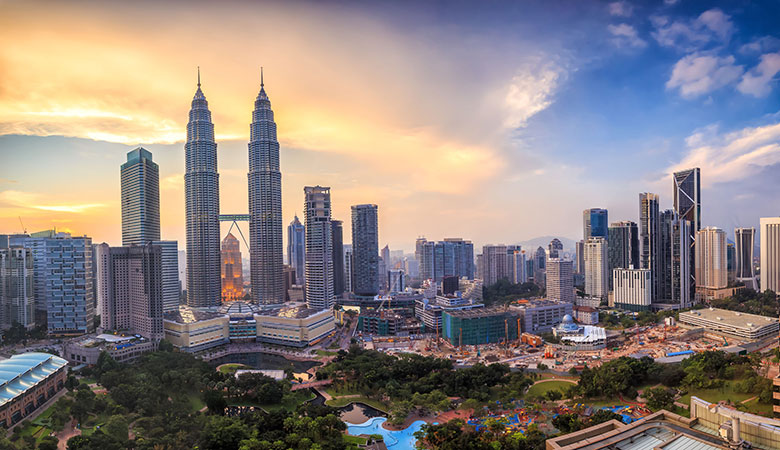
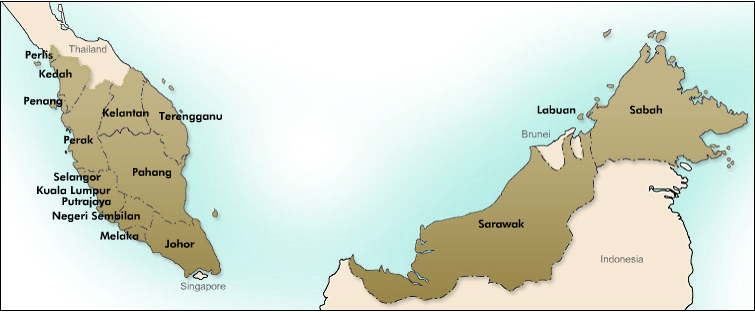
Malaysia in Brief
Capital: Kuala Lumpur
Administrative capital: Putrajaya
Official language: Bahasa Malaysia; English is widely spoken
Government: Constitutional monarchy, parliamentary democracy
Currency: Ringgit Malaysia (RM or MYR)
Land area: 328, 657 sq km
Population: 31, 127, 247 (as at 1 Jan 2016)
Time zone: GMT+8
Independence: 31 August 1957
So, you’re considering Malaysia as your higher education destination...
Great choice! We would like to be the first to welcome you to this colourful and amazing country.
And let us tell you that if you choose Malaysia as the place to further your studies, you’ll be among 122,061 other international students from 160 countries studying here. (Soaring Upwards: Malaysian Higher Education, MOHE, April 2016).
But if you’ve yet to decide, let us tell you a bit more about Malaysia and why this country could be ideal for you. We will also share what you need to know before making a decision – from the higher education opportunities available to you, to what to expect living as a student in Malaysia.
The States of Malaysia
Peninsular Malaysia or West Malaysia comprises 11 states, namely, Johor, Kedah, Kelantan, Melaka, Negeri Sembilan, Pahang, Perak, Perlis, Penang, Selangor and Terengganu. Together with Sabah and Sarawak (located in East Malaysia), they make up the 13 states of Malaysia. There are three Federal Territories namely, Kuala Lumpur - the capital of Malaysia; Putrajaya - the Federal Government Administrative Centre; and Labuan - a ‘tax-free’ island located off the coast of Sabah.
The People of Malaysia
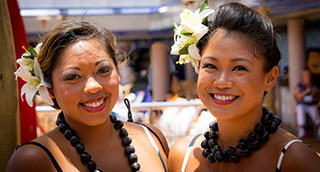
Malaysia is proud to be a multi-racial country living together harmoniously. With about 31 million people, the three major races are Malay, Chinese and Indian. Other ethnicities include Peranakan (Straits Chinese), Orang Asli (indigenous people) and Eurasians (who are mainly of Portuguese, Dutch or British descent).
The people of Sarawak are made up of Dayaks, Kayans, Kenyahs, Kelabits (Orang Ulu), Melanaus, Sarawak Malays, Penans and Lun Bawang (Muruts). In Sabah, the indigenous groups consist of the Kadazans/Dusuns, Orang Sungei, Bisayas, Bajaus, Muruts, Rungus, Bruneis, Lotuds and many other subgroups.
Common Languages
The country’s official language is Bahasa Melayu (Malay language), but many other languages and dialects are used in Malaysia. Mandarin is widely spoken by the Malaysian Chinese besides dialects like Cantonese, Hokkien, Hakka, Teo Chew, Foo Chow, Hock Chew, and Hainanese. The Malaysian Indian communities speak dialects like Tamil, Hindi, Telugu, Malayalam, Punjabi and Sri Lankan, among others.
In Malaysia, English language is one of the compulsory subjects in schools. It is widely used in everyday business communications, the tourism industry, radio and television broadcasting stations, commerce, and is also the medium of instruction at private higher educational institutions. Most Malaysians use English as their second language, hence, foreigners who speak English would be able to communicate effectively with Malaysians.
Religions in Malaysia
Islam is the official religion of Malaysia but other faiths like Buddhism, Christianity, Hinduism, Taoism and Sikhism are practised freely by all Malaysians. The Federal Constitution guarantees freedom of religion in the country.
Suraus (Musli prayer rooms) can be found in most buildings including colleges and universities. Mosques are found in every district while Christian churches, Buddhist temples and Hindu temples can be found throughout Malaysia.
Location and Climate
Malaysia is located in south-east Asia, 7 degrees north of the equator, GMT +8. Its neighbours are Thailand, Singapore, Brunei and Indonesia. Malaysia is located in a zone that does not experience drastic weather changes or serious natural calamities such as earthquakes and tornados.
Malaysia has a pleasant tropical climate and is generally hot and humid throughout the year. Temperatures are around 30-33°C during the day and 25°C at night in the lowland areas and between 21°C and 28°C in the highlands. Light cotton, cool and casual clothing is recommended all year round.
Most of the facilities on campuses are air-conditioned so students like you can study in comfort.
The north-east monsoon blows from the months of November to April and bring heavy rains to the east coast of Peninsular Malaysia as well as to Sabah and Sarawak. The south-west monsoon season from May to October is a drier period although the tropical climate means that rain and thunderstorms can be expected from time to time.
Did You Know
Malaysia was rated the world’s 12th most preferred study destination by international students in 2014 according to UNESCO. The higher education institutions in Malaysia have captured a substantial market share of the world’s international students in the fast growing sector of private education. There are around 1.25 million Malaysian students enrolled in tertiary education institutions in Malaysia, and the number of international students making their way here is increasing every year.
Food in Malaysia
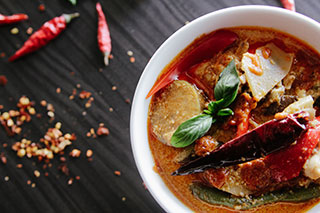
With its delightful varieties of cultures and traditions, Malaysia is undeniably a food haven that offers a sumptuous range of cuisine. Malaysians love their food and most will agree that there is no other country in the world that has as much variety of food that tastes so good. The price of the food is so affordable that you can eat out most of the time during your stay in Malaysia.
Malay, Chinese and Indian cuisine are easily available at most restaurants and hawker stalls. At the same time, there are many restaurants that serve cuisine from all over the world - American, Middle Eastern, Thai, Italian, German, Spanish, French, Japanese, Korean, and many others. Fastfood outlets serving burgers and pizza can be found easily. Halal food is available everywhere and there are ample eateries that offer vegetarian food. Eating out in major cities is convenient as many restaurants are open 24 hours.
Malaysian food that are most popular with international students:
- Chicken rice
- Roti canai
- Fried rice
- Satay
- Nasi lemak
Favourite food of students:
- Burgers and fries
- Pizza
- ‘Mixed rice’ (rice with a combination of meat and vegetable side dishes)
Colourful Culture Everywhere
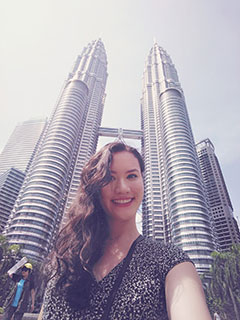
“Since coming to Malaysia to study I’ve experienced different cultures, festivals, languages, foods! Chinese New Year was a highlight as it combined all four.”
Zoe Tranter, Australia
Currently pursuing Bachelor of Arts in Monash University Malaysia
Malaysians celebrate the festivals of different communities together, giving them the opportunity to learn more about various cultures. During these festivities, the official residences of Malaysian leaders are open to the public. Malaysians also invite guests to their homes for a friendly get-together while partaking in the festivity. It is no wonder that many tourists have remarked that Malaysians are very hospitable, welcoming and warmhearted.
Muslims from other parts of the world can definitely feel at home here with Muslim celebrations like Hari Raya Aidilfitri. The Chinese celebrate Wesak Day (a Buddhist festival) and the Lunar New Year. For Hindus, Deepavali and Thaipusam are important festivals while the Sikhs celebrate Vasakhi. Christmas is celebrated by Christians in Malaysia; Pesta Kaamatan is celebrated by the people of Sabah; and the Dayak Harvest festival, marked by family reunions, cultural dances, kenduri (feasts), games, beauty contests and public entertainments, is celebrated in Sarawak.
The Economy of Malaysia
When the nation first gained independence in 1957, the economy was completely dependent on commodities like rubber, tin and palm oil. Since the 1970s, the country has been able to transform its economy to become a dynamic, vibrant and industrialised nation that has resulted in the industrial and services sectors contributing to almost 90% of the Gross Domestic Product (GDP).
“Malaysia has a newly industrialised market economy, which is relatively open and stateoriented. The economy of Malaysia is the third largest in Southeast Asia, after the much more populous Indonesia and Thailand, and 35th largest in the world. Malaysia is also the third richest in Southeast Asia by GDP per capita values, after the city states of Singapore and Brunei. Malaysia’s economy is one of the most competitive in the world, ranking 14th in 2015."
Wikipedia
“Malaysia is a highly open, uppermiddle income economy. Malaysia was one of 13 countries identified by the Commission on Growth and Development in its 2008 Growth Report to have recorded average growth of more than 7 percent per year for 25 years or more."
World Bank, April 2016
“Malaysia is a highly open, uppermiddle income economy. Malaysia was one of 13 countries identified by the Commission on Growth and Development in its 2008 Growth Report to have recorded average growth of more than 7 percent per year for 25 years or more.”
World Bank, April 2016
“‘Malaysia remains a good example of a country that has ‘converted’ from commodity-dependence to a diversified modern economy,’ says World Bank economist Kaushik Basu."
New Straits Times, 29 March 2016
The average GDP growth of Malaysia since 2010 has been 5.6%. The gross national income per capital has increased to RM36,000 in 2015 from RM28,000 in 2010. The country’s economy is expected to grow moderately lower at 4 to 4.5 in 2016 against the backdrop of a global economy slowdown. The country’s foreign exchange reserves was USD97,025 million in March 2016.
The Malaysian Currency
Monetary transactions are conducted in Ringgit Malaysia (RM or MYR) and sen. The notes are in denominations of RM1, RM5, RM10, RM50, and RM100. Coins are issued in 5, 10, 20 and 50 sen pieces. Credit cards are also widely accepted at commercial businesses, while travellers’ cheques can be cashed at any commercial bank, hotel or authorised money changers.
Achievements of Malaysia
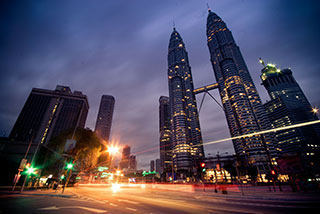
In the 2016 World Competitiveness Yearbook published by the Swiss-based Institute for Management Development (IMD), Malaysia ranked 19 among the most competitive countries in the world.
Malaysia was ranked 5th by International Living Magazine under the category of ‘The World’s Top Retirement Havens’ for 2016.
Malaysia was ranked 11th on the list of most-visited countries for 2014 by the United Nations World Tourism Organization (UNWTO) under its World Tourism ranking.
Malaysia has a tradition of warm hospitality and welcomes people from around the world. In 2015, based on HSBC's Expat Explorer Survey, where 21,950 expatriates from 198 countries took part in the online survey, Malaysia ranked 3rd top country where expats feel at home in less than a year.
Lonely Planet, one of the most widely read travel guidebook, picked Malaysia as one of the world’s top 10 travel destinations for 2014. Malaysia, the only Asian country to have made the list in Lonely Planet’s Best in Travel 2014 – Top 10, was ranked 10th, due to the country’s ability in ‘rolling out an array of new attractions’.
In Expedia UK’s World’s 25 Best Shopping Cities list, Kuala Lumpur was ranked No.5. The city received its high ranking for its diversity, from being home to designer names and international chains to local products. Shoppers can look forward to getting great value in this city. There are no shortage of malls in Malaysia. Food, entertainment and shopping – Malaysia is also home to 1 Utama Shopping Mall, the 6th largest shopping mall in the world.
According to the Geneva-based World Economic Forum, Malaysia ranked the 18th most competitive economy in the world in The Global Competitiveness Report 2015-2016. The report assesses the competitiveness landscape of 140 economies, providing insight into the drivers of their productivity and prosperity.
In the World Bank report titled ‘Doing Business 2016’ which ranks economies based on their ‘ease of doing business’, Malaysia emerged as the 18th most business-friendly nation in the world out of the 185 economies/countries surveyed during the period from January 2014 to June 2015.
Malaysia is the 26th most globalised country out of 207 countries surveyed in the world, according to the KOF Index of Globalisation 2015. This index measures the country’s economic, social and political dimensions of globalisation.
Kuala Lumpur is still among the least expensive cities in terms of cost of living when compared with other major Asian cities. Kuala Lumpur was voted the most affordable city in the world for students, according to QS Best student Cities Survey 2015/16.
In ECA International’s global ranking of expatriate living conditions for 2015, Kuala Lumpur and George Town both ranked 16th in Asia and 118th in the world, while Johor Baru ranked 21st in Asia and 126th in the world.
Singapore-based Muslim travel consultancy Crescent Rating conducted a study which ranked countries on how well they catered to the growing number of Muslim holidaymakers seeking halal or Islam-compliant food and services. The survey ranked Malaysia as the world’s top Muslim-friendly holiday destination; and Egypt, Turkey, United Arab Emirates, Saudi Arabia and Singapore as runners-up.
In International Living’s ‘The World’s Best Places to Retire in 2016’, Malaysia was rated the 5th best country for retirement.
Malaysia is ranked among Asia Pacific’s top 10 foreign direct investment (FDI) hotspots, according to a study by US-based global information company IHS Inc., who also referred to Malaysia as Asia’s next advanced economy. The IHS report said that Malaysia’s economy is forecast to achieve a per capita GDP of US$20,000 by 2025, with total GDP exceeding US$1 trillion by 2030.
According to Mercer’s 18th annual Quality of Living survey, Kuala Lumpur is the second highest ranking city in Southeast Asia, and 86th in the world. Mercer evaluates local living conditions grouped in 10 categories: Political and social environment, Economic environment, Socio-cultural environment, Medical and health considerations, Schools and education, Public services and transportation, Recreation, Consumer goods, Housing, and Natural environment.
Top 10 Major Export Products 2015
- Electrical & Electronic Products (35.6%)
- Chemicals & Chemical Products (7.1%)
- Petroleum Products (7.0%)
- Liquefied Natural Gas (LNG) (6.0%)
- Palm Oil (5.1%)
- Machinery, appliances & parts (4.6%)
- Manufactures of Metal (4.5%)
- Optical & Scientific Equipment (3.3%)
- Crude Petroleum (3.3%)
- Rubber Products (2.6%)
- Other Products (20.7%)
Places of Interest in Malaysia
What are some popular holiday spots for students in Malaysia?
- Langkawi island, Kedah
- Genting Highlands, Pahang
- Georgetown and Melaka – UNESCO World Heritage Cities
- Taman Negara National Park, Pahang
- Legoland, Johor
- Mount Kinabalu, Sabah
- Mulu Caves, Sarawak
- Pulau Perhentian, Terengganu
- Kuala Lumpur
- Cameron Highlands, Pahang
International students studying in Malaysia will find all its 13 states fascinating and enjoyable to explore. The multi-ethnic Malaysian society has interwoven its influence with the natural environment and this provides interesting spots and historical landmarks for all to visit.
Malaysia is endowed with a rich natural heritage. It has a 130-million-year-old rainforest that is home to a wide variety of flora and fauna. Decorated with beautiful coastlines, idyllic beaches, secluded islands and majestic mountains, Malaysia is an excellent destination for outdoor and recreational activities. Malaysia takes pride in having three properties inscribed on the ‘UNESCO World Heritage Sites’ list. They are the historic cities of George Town (Penang) and Melaka; Gunung Mulu National Park; and Kinabalu National Park.
Peninsular Malaysia’s long coastline along with the many coral-fringed islands and coasts of Sabah and Sarawak, Malaysia provides many magnificent beaches for a blissful and relaxing holiday.
Visitors will never be at as loss for a place to stay in Malaysia. There is accommodation to suit everybody’s need and budget. Accommodation rates are among the cheapest in this region. From budget to five-star hotels and resorts, and even home stay programmes at the countryside, visitors will be spoilt for choice.
Transportation in Malaysia
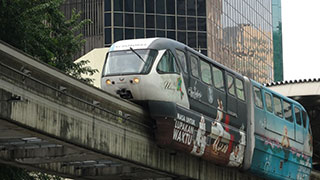
Malaysia has excellent infrastructure which makes commuting affordable and convenient. The country has well-connected transportation and communication systems within the country and with the rest of the world. Malaysia has extensive road, rail, air and sea links.
Malaysia is a major air transport hub in Southeast Asia services by the national airline Malaysia Airlines (MAS); and low cost carriers like AirAsia, FireFlyz and Malindo. Malaysia’s state-of-the-art international airport, KLIA (Kuala Lumpur International Airport) is one of the largest international airport in the region. A second airport, KLIA2, was built to meet the growing demand in the low-cost travel industry. KLIA2 can accommodate up to 45 million passengers a year.
Malaysia is connected by an excellent network of tarred roads and rail system. The 772-km long North-South Expressway is the longest and most impressive modern highway that links the northern-most part of the Peninsular (Bukit Kayu Hitam in Kedah near the Malaysia-Thai border) to Johor Bahru at the southern portion of Peninsular Malaysia (bordering Singapore).
Many Malaysians own cars or motorcycles, and this is the main mode of transport within cities and towns. Public transportation is abundant and affordable; these include town and interstate buses, taxis, the Monorail and Light Rail Transit (LRT) within Kuala Lumpur as well as KTM and e-KTM (Keretapi Tanah Melayu) trains. The KL Monorail interfaces with other rail systems that include the KL Express Rail Link (ERL) which is linked to the KL International Airport at KL Sentral Station.
Events and Festivals
Here are some events and festivals you can look forward to during your sojourn as an international student:
Explore the differents events in Malaysia- Le Tour de Langkawi - one of the top cycling races in the world (February)
- Langkawi International Maritime and Aerospace Exhibition (LIMA) (held once every 2 years in March)
- Putrajaya International Hot Air Balloon Fiesta (March)
- Borneo Deathmarch 250k Ultra Marathon (April)
- Borneo Jazz Festival (May)
- Penang International Dragon Boat Festival (May)
- International Pahang River Rafting Expedition in Kuala Lipis (April/May)
- Fraser's Hill International Bird Race (May)
- Kelantan International Kite Fest (May)
- Floria – annual flower and garden festival (May)
- Penang International Lion Dance On Stilts Championship (June)
- Sabah International Folklore Festival (July)
- The Japanese Bon Odori Festival in Penang and Shah Alam (July)
- The Rainforest World Music Festival, Sarawak (August)
- George Town Festival, Penang (August)
- Port Dickson International Triathlon (August)
- Standard Chartered KL Marathon 2016 (August)
- Malaysian Formula 1 Grand Prix, Sepang International Circuit (Sept/Oct)
- Mt Kinabalu International Climbathon (October)
- Tamu Besar, traditional open-air market usually held in Kota Belud, Sabah (October)
Long-Stay in Malaysia – Malaysia My Second Home Programme

"I chose to study in Malaysia because it is easy to adapt to life in this country, with its multi-cultural community and widelyspoken English."
Ahmad Al Mallah, Syria
SEGi University
Coming to Malaysia as an international student doesn’t need to be a solitary affair. Malaysia foreigners a perfect place for retirement and leisure.
The Malaysia My Second Home Programme allows foreigners, who fulfill required criteria, to stay in Malaysia on a multiple-entry social visit pass. The Social Visit Pass is initially for a period of 10 years, and is renewable. It is open to citizens of all countries recognised by Malaysia regardless of race, religion, gender or age. Applicants are allowed to bring their spouses and unmarried children below the age of 21 as dependents to reside in Malaysia. Under certain conditions, it even allows you to hold part-time employment or to have a business in the country and other financial benefits.
All MM2H applications are to be submitted through licensed MM2H agents only. No individual applications or third party applications will be entertained. For more information, please log onto http://www.mm2h.gov.my
Why Malaysia is an excellent long-stay destination:
Among the lowest cost of living in Asia while providing a high quality of life with modern infrastructure, amenities and facilities in place.
Pleasant, warm and sunny weather with moderate rain throughout the year.
Politically stable and is one of the safest countries in the world with a relatively low crime rate.
The country practises religious and cultural freedom and harmonious intermingling of different cultures and traditions.
English is widely spoken throughout the country
Modern infrastructure that provides well connected, up-to-date, efficient transportation and communications systems
Quality education at all levels is available at a reasonable cost. Malaysia has one of the best-developed and high quality educational systems with a choice of public and private and international schools of repute
Efficient, international quality and reasonably priced medical facilities
Quality residences of all kinds, terrace houses, semi-detached, bungalows, apartments and condominiums are available all over the country. It is also possible to build your home in resort-like environments on the beaches, near the jungle, or the centre of bustling city centres
An exquisite variety of cuisine with food from all over the world at very reasonable prices
Lots of choices for individual and family recreation and enjoyment - from theme parks, jungles, mountains, sports, islands and beaches, water sports and a great number of golf courses
Public Holidays in Malaysia
All states observe Saturdays as a half working day and Sundays as non-working days; with the exception of Johor, Kedah, Kelantan and Terengganu which observe Fridays as a half- day and Saturdays as non-working days.
Public holidays observed in Malaysia include national and state holidays. The former is observed by all states while every state has its own set of holidays.
References:
- Study in Malaysia Handbook (9th International Edition)
- www.moe.gov.my
- www.mida.gov.my
- www.matrade.gov.my
- www.tourismmalaysia.gov.my
- Various local newspaper reports
- Various websites related to ranking of Malaysia’s performance & achievement
(Note: All the rates quoted above may not be up to date and are subject to change without prior notice)
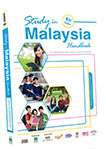 Source: Study in Malaysia Handbook 10th Ed.
Source: Study in Malaysia Handbook 10th Ed.All rights reserved. No part of this editorial contents may be reproduced, copied, translated, or stored in a retrieval system or transmitted in any form or by any means without the written consent from the publisher Challenger Concept (M) Sdn Bhd (www.studymalaysia.com/challenger)
You May Also Be Interested In...
Studying Abroad - Where to Next? : Your Higher Education Options in Malaysia
![Studying Abroad - Where to Next?
: Your Higher Education Options in Malaysia - StudyMalaysia.com]() Studying abroad doesn’t have to be just a dream anymore. Malaysia we...
Studying abroad doesn’t have to be just a dream anymore. Malaysia we...About Malaysia
![About Malaysia - StudyMalaysia.com]() So, you’re considering Malaysia as your higher education destination...
So, you’re considering Malaysia as your higher education destination...Where can I study in Malaysia?
![Where can I study in Malaysia? - StudyMalaysia.com]() Now that you’re considering Malaysia a country to study abroad, nex...
Now that you’re considering Malaysia a country to study abroad, nex...�Cost of Studying and Living in Malaysia
![�Cost of Studying and Living in Malaysia - StudyMalaysia.com]() One of many reasons why international students choose Malaysia is beca...
One of many reasons why international students choose Malaysia is beca...A university student's cost of living in Malaysia
![A university student's cost of living in Malaysia - StudyMalaysia.com]() In a survey on the ‘Most Affordable Cities for Students between 2016...
In a survey on the ‘Most Affordable Cities for Students between 2016...Malaysia - Facts At A Glance
![Malaysia - Facts At A Glance - StudyMalaysia.com]() Read about Malaysia's facts and figures here.
Read about Malaysia's facts and figures here.
















